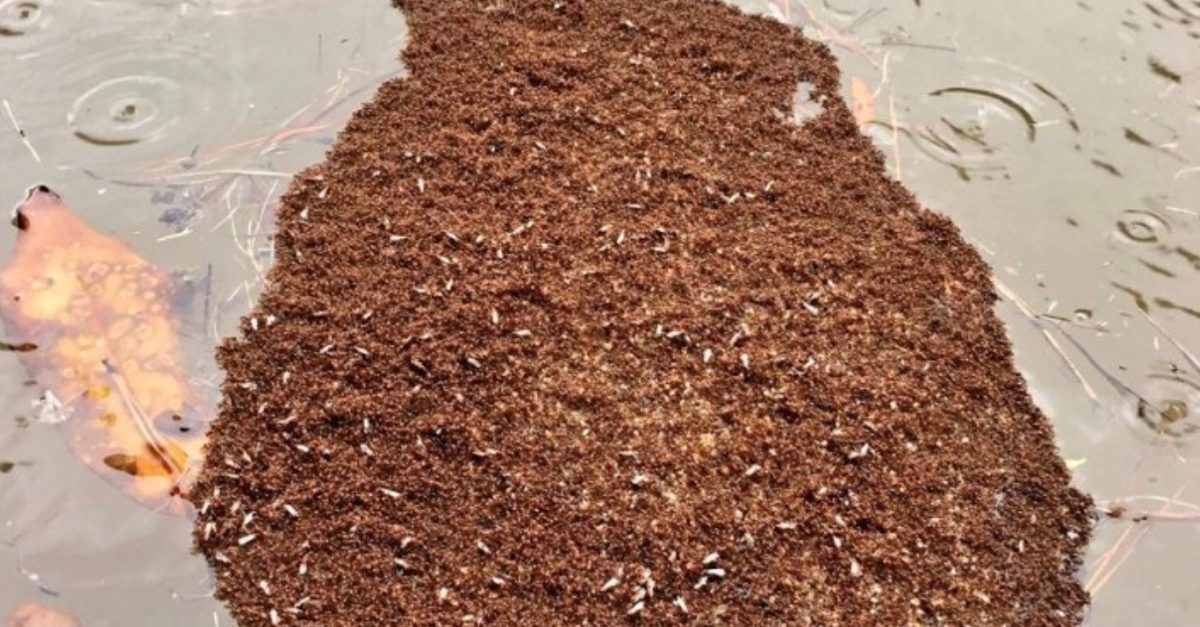A few brave souls emerging from their bunkered homes to explore the floodwaters left by Hurricane Harvey can expect to see a wide range of hazards: alligators, snakes, mosquitoes and even the occasional “brown trout.”
Videos by Rare
[protected-iframe id=”4365457cd124643b5e2890d745a60176-46934866-19043498″ info=”https://www.facebook.com/plugins/post.php?href=https%3A%2F%2Fwww.facebook.com%2Fvivvy.saldana%2Fposts%2F1536927626366801&width=500″ width=”500″ height=”645″ frameborder=”0″ style=”border:none;overflow:hidden” scrolling=”no”]
However, none of those compare to the potential pain to be inflicted by an encounter with another dangerous menace: floating colonies of fire ants.
Fire ants form a protective island as they float out the #Houston flood pic.twitter.com/UBORwAzA4R
— Omar Villafranca (@OmarVillafranca) August 27, 2017
RELATED: Do mosquitoes love you? Here are some natural methods for keeping the bugs away
Scientists who study these insects estimate a floating colony can contain up to 500,000 fire ants, and Paul R. Nester, a researcher with the Texas A&M AgriLife Extension Service, said these colonies can take on a wide range of shapes, such as balls, ribbons or mats.
He also stated these insects are built to survive in water, as the floodwaters don’t drown them, and flowing water doesn’t always dislodge them, especially once they’ve latched on to a victim:
“[Fire ant] colonies emerge from the soil, form a loose ball, float and flow with the water until they reach a dry area or object they can crawl up on,” Nester said in an interview with a Houston publication. “A spray made of diluted biodegradable dishwashing liquid may help immobilize and drown them.”
Nester also warned anyone considering exploring the floodwaters to do so in a rowboat or kayak:
“If you are in a row boat, do not touch the ants with the oars since they can ‘climb aboard’ via the oars.”
RELATED: Invasive Asian Lady Beetles not as cute or fun as ladybugs
In most cases, a fire ant sting can produce red, pustule bumps, intense burning and itching sensations in the attacked area.
In extreme cases, victims can experience fatal allergic reactions.
Authorities are recommending people do not enter the floodwaters without full-body protective clothing, including boots, gloves, long pants and long-sleeved shirts and to avoid them altogether if at all possible.



